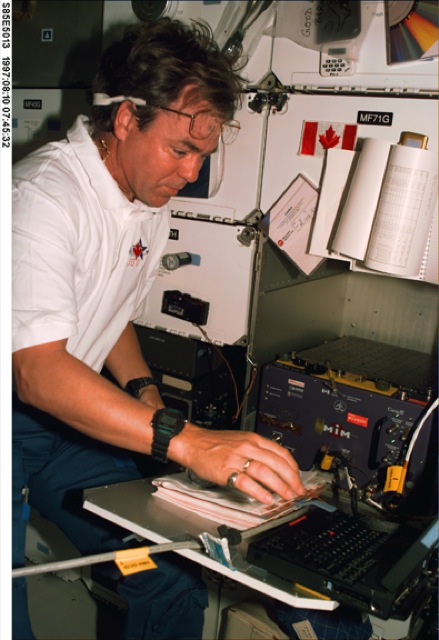

NAME: Bjarni V. Tryggvason
Canadian Space Agency Astronaut -Retired
PERSONAL DATA:
Born September 21, 1945, in Reykjavik, Iceland.
Bjarni Tryggvason has two children.
He is an Airline Transport rated pilot with more than 4,500 hours of flight experience, and 1,800 hours as a flight instructor. Mr. Tryggvason is active in aerobatic flight and completed a Captaincy check in the Tutor jet trainer with the Canadian Air Force. He enjoys jogging, skiing, and general fitness.
EXPERIENCE:
Bjarni Tryggvason was a meteorologist with the cloud physics group at the Meteorlogic Service Canada (formerly the Atmospheric Environment Service) in Toronto in 1972 and 1973.
SPACE EXPERIENCE:
Selected as one of the original six Canadian astronauts in December 1983, Mr. Tryggvason trained as a backup payload specialist for the CANEX-2 set of experiments, which flew on Mission STS-52 in October 1992. He was also the project engineer for the Space Vision System Target Spacecraft, which was deployed during that mission. Mr. Tryggvason also served as the principal investigator for the following projects: The development of the Large Motion Isolation Mount (LMIM), which flew numerous times on NASA KC-135 and DC-9 aircraft; The Microgravity vibration Isolation Mount (MIM) which operated on the Russian space station, Mir, from April 1996 until January 1998 to support several Canadian and US experiments in material science and fluid physics; In August 1998, he was invited to take part in NASA mission specialist training held at the Johnson Space Center in Houston, Texas. His class underwent two years of physical and academic training, and marked the first group of astronauts to be trained as both mission specialists for the space shuttle and as potential crewmembers for the ISS.
SPACE FLIGHT:
STS-85 On August 7, 1997, Mr. Tryggvason flew as a payload specialist aboard Space Shuttle Discovery on Mission STS-85. His primary role was to test MIM-2 and perform fluid science experiments designed to examine sensitivity to spacecraft vibrations, in order to develop a better understanding of the need for systems such as the MIM on the International Space Station (ISS), and to study the effect vibrations have on the many experiments performed on the ISS.
CURRENT STAUS:
From mid 2001 to 2003 he worked in the private sector while on leave from the CSA. He returned temporarily to work at the CSA in 2004 and currently holds the position of visiting professor at the University of Western Ontario. He has written more than 50 published papers and holds three patents. He retired from the Canadian Space Agency (CSA) effective June 2008.
Nov 2009